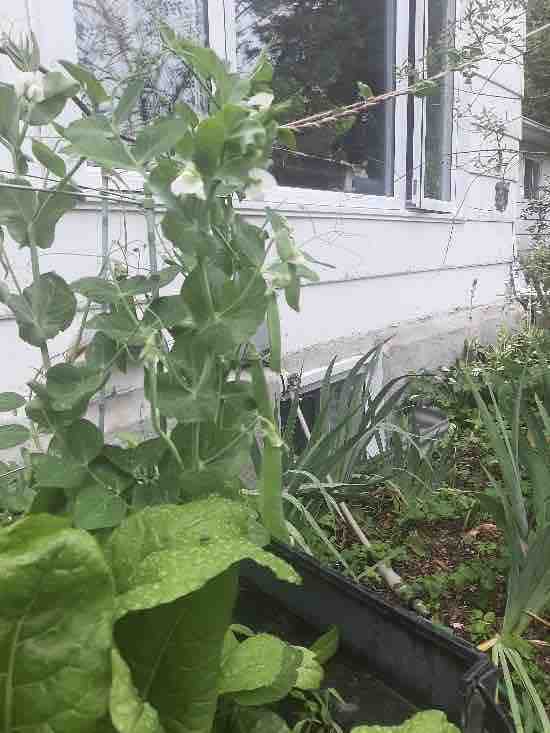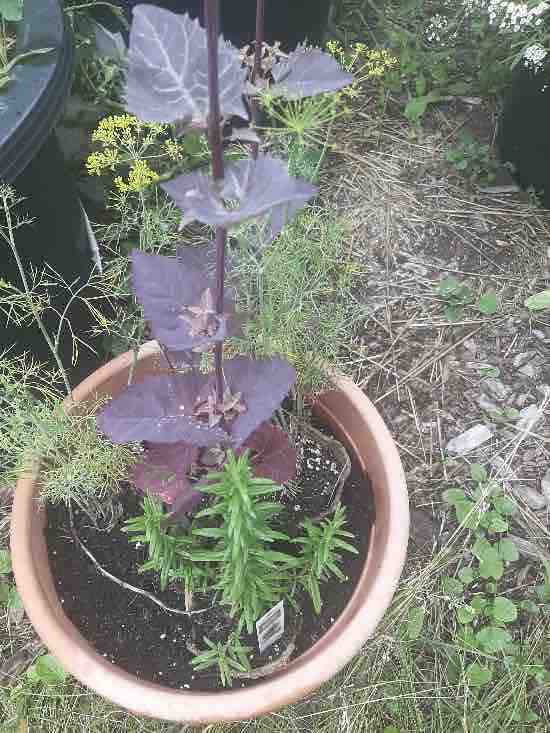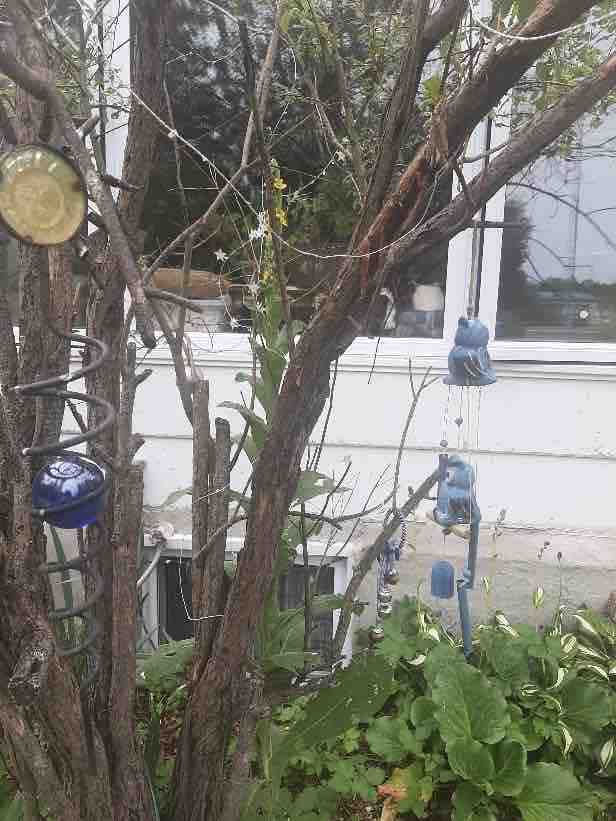Your cart is currently empty!
Wild Parsnip Rash and Around the Vegetable Garden
Sadly, I keep finding wild parsnip in and around the area and it is requiring a lot of my attention. I don’t like to cut or pull it on a sunny day if I can help it. That sap likes to splash, and I have scars from the rashes I got from the wild parsnip.
Greetings fellow gardeners,
The weather is up and down as usual, but I did enjoy seeing some rain this morning. The wonderful news is that more and more vegetables are becoming ready for harvest. I have one tomato that should be ready for me to pop in my mouth tomorrow!
Around the Garden
The large pot of lettuce that I planted with the spikey mat continues to grow undisturbed. This lettuce will be ready to have its first cut next week. I have been adding spikey mats to all of the pots that the squirrels were digging in. It works well. This week my salad includes fresh Swiss chard, leaves pulled off the vining Red Malabar spinach, and a sprinkling of peas. Over by the tomato area the red orach is doing well. I am pulling off leaves of the orach just as I pull off leaves of the spinach. I am leaving two of the red orach plants to flower and set seed.


Now is the time to be vigilant. My zucchini flowers are forming, as are the cucumber and squash flowers. I have spread these plants apart from each other in hopes of them not being found by rogue cucumber beetles. The zucchini tucked in near the back porch as well as near the brussels sprouts. I am looking forward to lots of zucchini that I can cook and freeze and share with friends. The cucumber is hiding behind the milkweed and around the side of the shed. This year I want to have enough cucumbers to make lots of bread and butter pickles. The large Queensland Blue Hubbard squash that is growing in the hügelkultur seems to be well disguised as it is tucked in with the various things that are growing there.
Wild Parsnip Rash
Sadly, I keep finding wild parsnip in and around the area and it is requiring a lot of my attention. I don’t like to cut or pull wild parsnip on a sunny day if I can help it. That sap likes to splash, and I have scars from the rashes I got from the wild parsnip. Here’s a video on wild parsnip rash.
A Mullein
As I was gazing at the birds with several of my too-many cats, I saw that a mullein (Verbascum) has taken up residence. It is tucked in right beside the tree trunk. This plant, which is often seen as a weed, is one of my favourites. The bright yellow flowers are attractive to pollinators and when the flowers turn to seeds this strong upright plant becomes a feeding station for goldfinches. The mullein was also used by angry villagers who would cut the five-to-six-foot plant, dip it in tallow and light it as they stormed the castle!

Your pots still need monitoring for water levels, and if you find that the pots are too wet be sure to put something under the pot to raise it off the ground.
Enjoy your week. Judith. Contact Judith through her Website https://www.lapisdragonarts.com/.
Find more weekly Veggie Bites experiences on the Veggie Bites page
About the Author
Share with Family and Friends
Featured Authors
Visit a Botanical Garden For Unique Experiences.
Comments
Logging in to comment gives you more features, but it is not required.
Subscribe
0 Comments
Oldest












